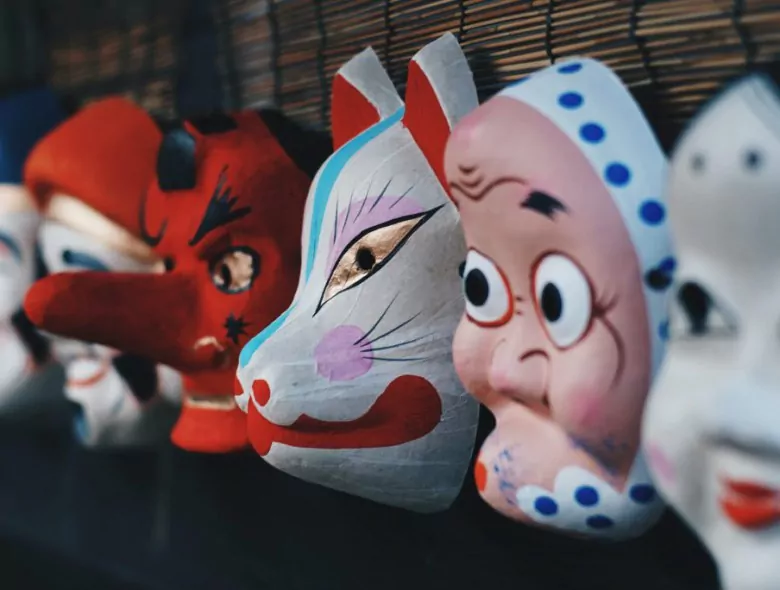
Japan is a country rich in culture, and with this culture comes plenty of Japanese traditions. Read today’s article and learn all about the Setsubun festival!
Whilst Japan is famous today on the world stage for its manga and anime, you would be mistaken in thinking that manga and anime are the most interesting things in Japan.
Of course, Japan is equally as famous for its beautiful temples, for its cherry blossom and autumn seasons. However, if you explore Japan beyond these cultural landmarks you will soon discover a vast number of lesser-known Japanese traditions; some beautiful, some strange, but all interesting and exciting.
One of the traditions you should discover today is a Japanese festival called Setsubun.

Japanese Festivals
There are plenty of festivals in Japan. Look at a Japanese calendar and you will find them occurring nearly every month. Some Japanese festivals are bigger and more important than others, and Setsubun is one of the more popular festivals.
Held on either the 4th or 5th of February, Setsubun, meaning ‘seasonal division’, marks the beginning of the lunar calendar and the first day of spring. It may not feel like spring in the cold beginnings of February, but it is in Japan’s old calendar!
What is Setsubun in Japan?
Setsubun is not a national holiday, although the festivities definitely make the day seem like a holiday. The Japanese festival has its own special food and often involves dressing up as a demon and throwing Setsubun beans! (But more on that later!)

Where did Setsubun Come from?
Here’s a brief history lesson on the Japanese tradition of Setsubun. Like many festivals in Japan, Setsubun’s origins begin in China and was first introduced to Japan in the 8th Century.
At the beginning of the lunar calendar, it was thought that Setsubun was a time when spirits and demons were closest to the physical realm. Therefore, many of the Japanese traditions involved driving away unwanted ‘evil’ spirits.
Here are some traditional practices that are now largely lost in modern Setsubun celebrations.
Bringing All Tools Inside the House
Shinto beliefs state that all things have spirits. Humans, animals, nature – but even things like farming tools were thought to have spirits. On Setsubun people used to bring their tools inside to please these spirits, but also to stop bad spirits tampering with them!
Wearing ‘Opposite’ Clothes
It used to be common for those celebrating the Japanese festival to wear clothes of their opposites. For example, young women would wear older women’s clothes, and vice versa. Crossdressing was also popular for a time – this tradition can still be found within certain Geisha communities when celebrating Setsubun.

Setsubun Today, Setsubun Beans!
Today, Setsubun is largely about throwing Setsubun beans. So – what are Setsubun beans? Normally they are roasted soybeans, and they can be bought throughout January in Japan, and are often advertised as lucky beans, (Fukumame.)
This Japanese tradition is called Mamemaki and involves throwing the lucky beans out of the front door whilst chanting ‘oni wa soto’, meaning ‘demons out!’ Or ‘get rid of the demons!’ You then throw more beans into the house whilst shouting ‘fucku wa uchi!’ Meaning ‘luck inside!’

Many people then eat the lucky ‘inside’ beans. You should eat the number of beans corresponding to your age, adding an extra bean might just extend your lifetime!
Many stores in Japan sell packaged ‘inside Setsubun beans’ which you throw whilst still packaged. If you are worried about eating beans off of the floor – then try the inside beans!
Often a member of the family, usually the father, will dress up as a demon and chase the bean throwers around the house. The family will then chase the demon out of the door – effectively driving all of the bad spirits out of the house.
Setsubun Makizushi Rolls
Another way to honor the Japanese festival is by eating a eho-maki roll. Largely a Kansai variation on Setsubun, the Osaka-born tradition is quickly becoming a favorite feature of Setsubun across Japan.

Supermarkets across all of Japan now sell Setsubun makizushi rolls. They are large uncut sushi rolls that are usually eaten – in silence! – whilst looking at the ‘lucky’ direction. This lucky direction is designated by the Zodiac symbol corresponding to that year.
The tiger is this year’s zodiac symbol. This makes Setsubun more powerful than ever as tigers have been seen as spiritual guardians to ward off evil spirits for centuries!

Whether you honor the old or newer Setsubun traditions, this Japanese festival is packed full of fun. Try and take the time to experience it yourself! If you are living in Japan, your local Shinto shrines will usually have some sort of celebration. Why not get involved?
Happy Setsubun!



